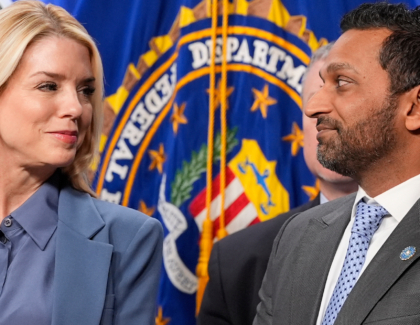Sign up for the daily CJR newsletter.
Lots of media news, analysis and history in this week’s stack of magazines.
The Nation‘s Katha Pollitt cannon balls into the ongoing debate about the lack of women writing opinion columns. (Click here for an earlier salvo.) Pollitt, no slouch in the speaking-her-mind department, dismisses one of the prevailing views — that gals just don’t think like guys.
It may be true that more men than women like to bloviate and “bat things out” — socialization does count for something. So do social rewards: I have seen men advance professionally on levels of aggression, self-promotion and hostility that would have a woman carted off to a loony bin — unless, of course, she happens to be Ann Coulter. But feminine psychology doesn’t explain why all five of USA Today‘s political columnists are male, or why Time‘s eleven columnists are male — down to the four in Arts and Entertainment — or why at Newsweek it’s one out of six in print and two out of thirteen on the Web. According to Editor & Publisher, the proportion of female syndicated columnists (one in four) hasn’t budged since 1999. The tiny universe of political-opinion writers includes plenty of women who hold their own with men, who do not wilt at the prospect of an angry email, who have written cover stories and bestsellers and won prizes — and whose phone numbers are likely already in the Rolodexes of the editors who wonder where the women are.
Besides being false and insulting, all this fuss about women not having the cojones for no-holds-barred debate overlooks the fact that, as Deborah Tannen pointed out in the Los Angeles Times, there are many ways to write political commentary. Not every male columnist is a fire-breather, an instant expert, a tub-thumper, an obnox.
Indeed, writes Polliltt, there are plenty of male opinion writers “who just drone boringly on. Surely there are women capable of that!” Her advice to editors: Hel-lo? We’re out there in abundance.
That other ongoing media debate — whither the future in a world of new media? — also is being waged in the parallel universe of advertising, and The New Yorker‘s Ken Auletta details the ups and downs of that industry through the eyes of Linda Kaplan Thaler, one of the creative lights in the $500-billion-a-year business (that’s just ad and marketing dollars spent in the U.S.).
While much has changed, a lot remains the same, writes Auletta.
Advertising … still sells goods by manipulating public attitudes about beauty and status. It encourages people to buy all sorts of products, from shampoo to automobiles, for reasons that do not always make sense. (Why do city-dwellers drive Hummers?) Keith Reinhard, who recently stepped down as CEO of DDB Worldwide but remains chairman, wrote the “You deserve a break today” campaign for McDonald’s in 1971, a classic of manipulation which Advertising Age named the No. 1 jingle of the twentieth century. “The consumer was not looking for a better hamburger,” Reinhard explains. “They were looking for a break.”
And if you’ve ever wondered about the origins of the Aflac duck, Auletta tells all.
The Economist weighs in on the Bush administration’s use of “fake news,” saying that the practice represents more than just an expedient way to promote a political agenda (subscription required). Instead, it reflects the prevailing view in the White House that the media is just another special interest to be manipulated at will.
If there is nothing special about the press, then there is nothing special about what it does. News can be anything — including dressed-up government video footage. And anyone can provide it, including the White House, which, through local networks, can become a news distributor in its own right. Given the proliferation of media outlets and the eroding of boundaries between news, comment and punditry, someone will use the government-provided information as news. In short, the traditional notion that the media play a special role in informing people is breaking down.
And finally, news that the Bush administration is good for magazine circulation. The New York Times yesterday reported that subscriptions to both conservative and liberal magazines jumped after the November election. The Nation, The Progressive and The American Prospect, leftist all, are enjoying readership spurts — but so are the right-leaning American Spectator, National Review and The Weekly Standard.
“Usually a conservative president helps liberal magazines, and the opposite is also true,” said Michael Tomasky, editor of The American Prospect. But this year, conservative magazines have also enjoyed a bump.
[H]ow do publishers on the right understand the boom? “Hate sells,” quipped Jack Fowler, associate publisher at National Review.
As if to back that up, The New Republic, which might qualify as centrist compared to any of the above, reports stagnant circulation. “We aren’t the kind of place that everybody ran to out of anger,” says publisher Stephanie Sandberg.
–Susan Q. Stranahan
Has America ever needed a media defender more than now? Help us by joining CJR today.






